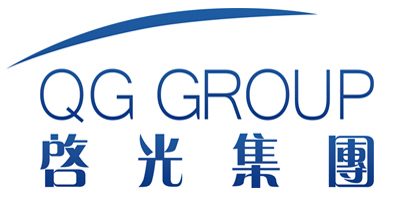Coatings: Inorganic zinc-rich primers vs. organic zinc-rich primers: what’s the difference?
Before explaining the difference between inorganic zinc-rich primers and organic zinc-rich primers, it is necessary to understand the mechanism of galvanic protection. Zinc-rich coatings protect the steel substrate from corrosion by barrier protection (but mainly sacrificial or cathodic protection). A corrosion cell consists of four elements (assuming oxygen conditions exist): anode, cathode, metal channel and electrolyte. The anode is the part of the metal that corrodes or dissolves. When the anode dissolves, positively charged ions are released through the electrolyte (usually an aqueous solution that may or may not contain ions contaminated with salts, etc.) and are absorbed by the more inert region (also called the cathode). Every metal has the potential to corrode; some metals are more susceptible to corrosion than other materials. When these metals are arranged in order from active to inactive, this is known as the potential sequence. In addition to zinc metal, there are other metals that have an anodic reaction to steel, but the corrosion products of most of these metals wrap around the surface of the steel, thus lowering their sacrificial potential relative to the steel. The corrosion product of zinc metal is usually a powder (e.g., zinc oxide) that readily underlies the exposed zinc layer and continues to provide galvanic coupling protection. This makes zinc metal an ideal candidate for a good protective primer for the manufacturing industry.
Two types of zinc-rich coatings are described in SSPC Paint Specification 20: Type I – inorganic coatings and Type II – organic coatings. Depending on the type of carrier, there are three varieties of Type I, including Type 1A (inorganic post-cure); Type 1B (inorganic self-cure – water dilutable) and Type 1C (inorganic self-cure – solvent dilutable). The specification also lists three zinc powder content grades that relate to the amount of zinc in the dry film coating. These include Class 1 – equal to or greater than 85%; Class 2 – equal to or greater than 77% but less than 85%; and Class 3 – equal to or greater than 65% but less than 77%.

The type of zinc-rich coating depends on the coating formulation and the binder used in the manufacturing process. Inorganic zinc-rich coatings typically consist of a silicate binder, while organic zinc-rich coatings can use a variety of binders, including epoxy, polyurethane, and alkyd resins. Inorganic zinc-rich primers perform differently from organic zinc-rich primers due to the difference in the binder.

Inorganic zinc-rich primers typically provide better galvanic coupling protection than organic zinc-rich primers because of the reaction that occurs between the silicate binder and the zinc metal particles, rather than the binder merely encapsulating the zinc metal particles as is the case with organic zinc-rich coatings. As a result of this reaction, inorganic coatings can be formulated with higher concentration volume ratios of zinc content. The higher the concentration of metallic zinc in the dry film, the longer the life expectancy of the coating system. This is not to say that inorganic zinc-rich coatings can be applied to all surfaces that need protection while providing long-lasting protection. These inorganic zinc primers should only be used for performance under near-white blast cleaned (SSPC-SP 10/NACE 2) prepared surface conditions; however, they can also be used on commercial-grade blast cleaned (SSPC-SP 6/NACE 3) prepared surfaces if the exposure is milder. Organic zinc-rich primers are more widely used and are less prone to dry spray or mud cracking of the applied coating. Inorganic zinc-rich primers are suitable for use in the paint shop (or in the open air by skilled personnel), whereas organic zinc-rich primers are more suitable for use in the field. However, many steel structures are making greater use of organic zinc-rich protection systems due to the severe challenges of constructability of inorganically formulated products.

Applying topcoats over inorganic zinc-rich primers can also be challenging because solvent-based inorganic zinc-rich primers require moisture to complete the curing reaction and the coating is porous. Applying a topcoat over a dry but uncured inorganic zinc primer may result in cohesive flaking of the zinc-rich primer, which will be exacerbated by shrink-cure stresses from the cured topcoat. Verifying the degree of cure of solvent-based inorganic zinc silicate by performing a methyl ethyl ketone (MEK) resistance test, per ASTM D4752, will help prevent this catastrophic failure. Since inorganic zinc is porous and releases gases when a topcoat is applied to its surface, it is often necessary to spray thin layers of topcoat to seal the porous surface (and accelerate the release of air from the pores of the surface layer) In contrast, organic zinc-rich primers will be much less porous as the liquid adhesive (epoxy, urethane, etc.) fills up the pores created by the loading of the metallic zinc particles.
Inorganic zinc-rich primers are usually repaired with organic zinc-rich primers because inorganic silicone zinc-rich primers do not have strong adhesives and usually do not adhere well to each other after the coating has cured.

